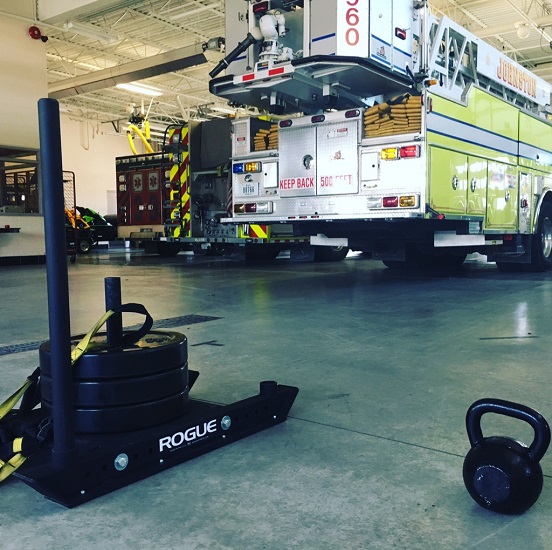Winter 2024
8 equipment considerations for your firehouse

Firefighters require specialized training equipment to enhance their tactical strength and conditioning, and a firehouse needs to be equipped with the best tools available.
In this article, we will explore the top equipment that can help firefighters build strength and power while meeting the unique demands of their profession.
- Functional Training Rigs — These are versatile structures that allow firefighters to perform a wide range of bodyweight exercises and resistance training. These rigs typically include pull-up bars, dip stations, and attachment points for resistance bands and suspension trainers.
- Benefits: Functional training rigs provide a comprehensive workout, targeting multiple muscle groups simultaneously. Firefighters can simulate real-world movements, enhancing their overall functional strength and mobility.
- Heavy Bag and Sledgehammer — These are excellent tools for developing upper body strength, endurance, and power. Firefighters can perform striking drills, mimicking the motion of breaking down doors or using a battering ram.
- Benefits: These tools improve grip strength, hand-eye coordination, and cardiovascular fitness. The dynamic movements involved in striking exercises mirror the physical demands faced during firefighting operations.
- Sandbags and Kettlebells —These are functional, portable, and versatile training tools. Firefighters can perform various strength-building exercises, such as carries, squats, and swings, using these unconventional weights.
- Benefits: Sandbags and kettlebells engage in stabilizing muscles and promote joint integrity, making them ideal for enhancing overall strength and resilience. Their irregular shapes also simulate the unpredictable nature of firefighting tasks.
- Plyometric Boxes — They are essential for developing explosive power and agility. Firefighters can perform box jumps, step-ups, and lateral movements to improve their ability to navigate challenging environments.
- Benefits: Plyometric exercises enhance firefighters’ ability to generate power quickly, crucial for tasks like ascending stairs or navigating uneven terrain. Improved agility translates to better on-the-job performance.
- Battle Ropes — These offer a full-body workout that focuses on cardiovascular conditioning, strength, and endurance. Firefighters can perform waves, slams, and other dynamic movements to enhance their cardiovascular fitness and upper body strength.
- Benefits: Battle ropes are an effective tool for improving cardiovascular health, grip strength, and shoulder endurance—essential components for firefighters who must perform physically demanding tasks for extended periods.
- Rowing Machines — These provide a low-impact, full-body workout that targets muscles in the back, arms, and legs. Firefighters can benefit from the cardiovascular conditioning and strength building offered by rowing exercises.
- Benefits: Rowing helps improve aerobic capacity, endurance, and overall cardiovascular health. It also promotes muscular balance and endurance in key muscle groups used during firefighting tasks.
- Agility Ladders — These are simple yet effective tools for improving footwork, coordination, and agility. Firefighters can use agility ladder drills to enhance their ability to move quickly and efficiently in confined or complex spaces.
- Benefits: Improved agility and foot speed are critical for navigating through debris, tight spaces, and uneven terrain during emergencies.
- Power Sleds — These are designed for pushing or pulling exercises, providing an effective way to build lower body strength and power.
- Benefits: Power sled workouts target the quadriceps, hamstrings, and glutes while also improving cardiovascular endurance. These exercises simulate the need to move heavy objects or victims during emergencies.
Including a variety of equipment in the strength and conditioning program at your firehouse ensures a well-rounded approach to physical preparedness for firefighters. Tailoring workouts to mimic the challenges they face in the field will contribute to improved overall fitness and performance in the line of duty.
» ALSO SEE: Dual-task, neuro-cognitive tactical training methods
Equipping your firehouse with the right tactical strength and conditioning tools is crucial for ensuring the physical preparedness of firefighters. Firefighters who engage in regular, targeted workouts with these tools will be better prepared to face the challenges of their demanding profession, ultimately enhancing their safety and the effectiveness of their life-saving efforts.



